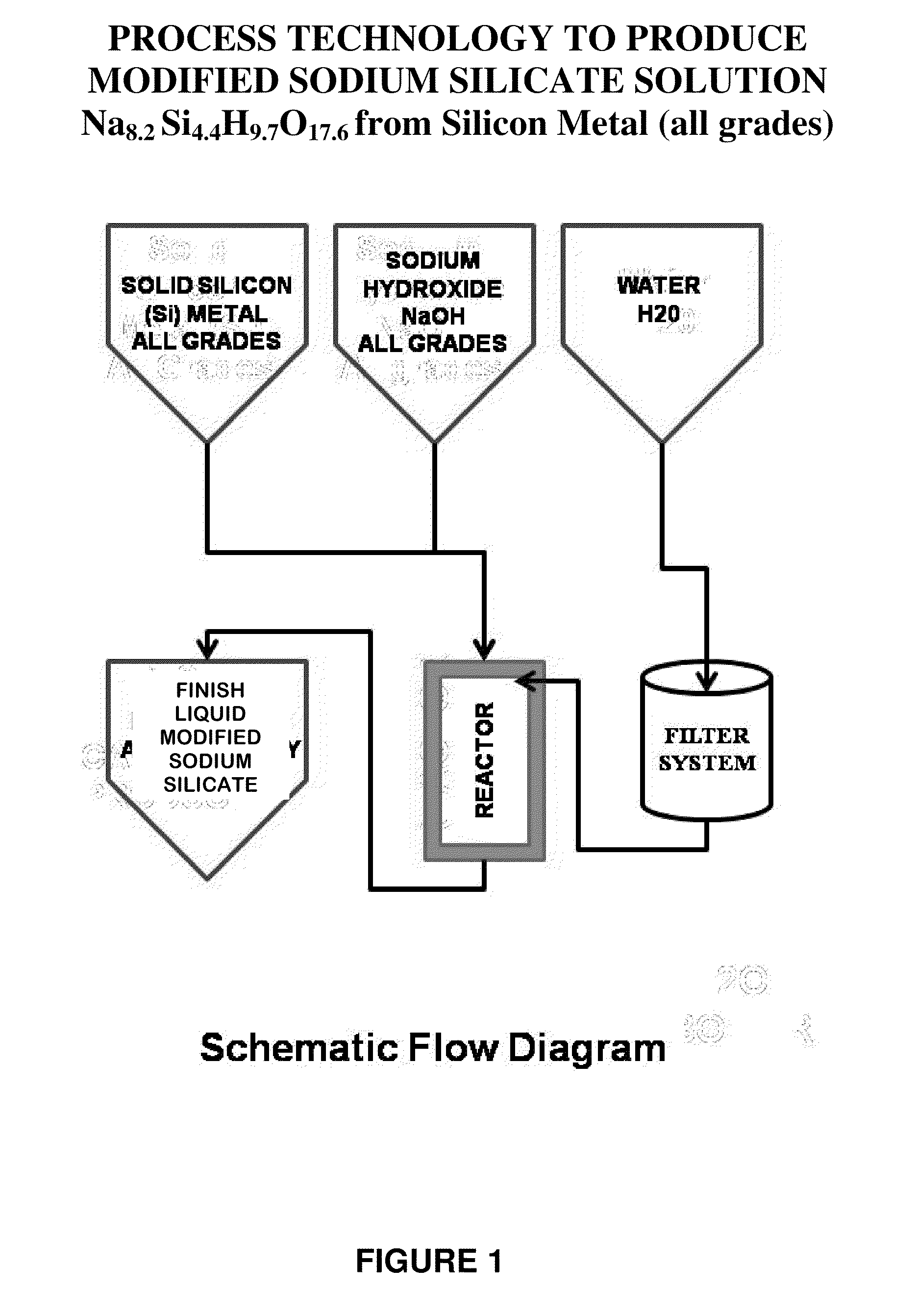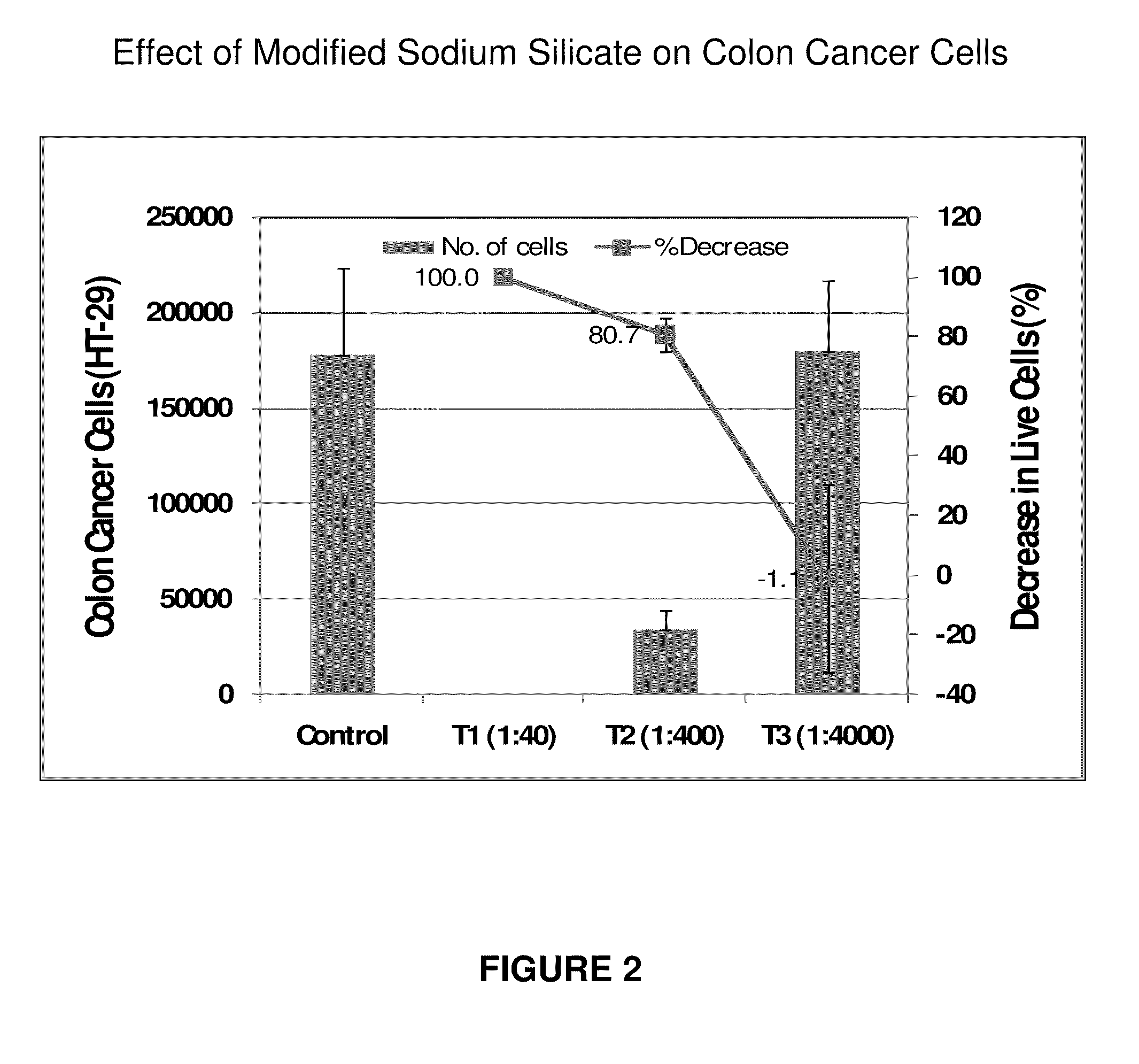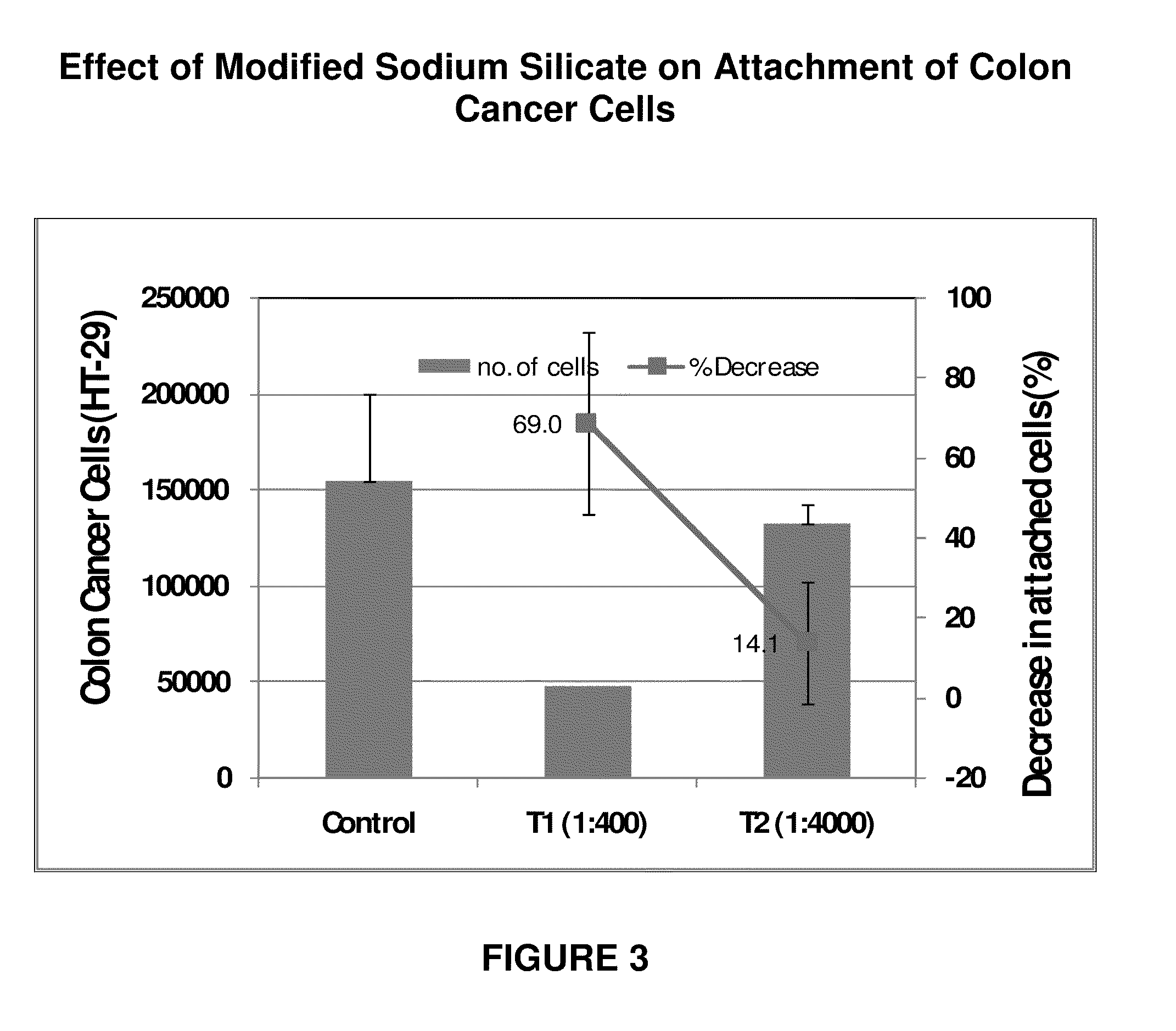Method and composition for treating cancer, effecting apoptosis and treating retroviral infections
- Summary
- Abstract
- Description
- Claims
- Application Information
AI Technical Summary
Benefits of technology
Problems solved by technology
Method used
Image
Examples
example 1
Production of Modified Sodium Silicate
[0162]The following example describes a representative method for making the modified sodium silicate of the present application,
[0163]To make 10 gallons of the modified sodium silicate at 1.25 specific gravity, the following ingredients were used:
Initial amount of silicon rock to start the reaction46.7poundsWater at 150° F.5.5gallonsSodium hydroxide at 50%2.05gallons
[0164]Reaction process for the first batch:
[0165]First, the silicon rock was introduced into a 30 gallon reactor. Note: after the initial reaction, the amount of silicon rock that will be needed to start the reaction for a subsequent second batch and every other thereafter will be only 7.85 pounds.
[0166]Second, approximately half of the total volume of the heated water was added to the reactor.
[0167]Third, sodium hydroxide was added, while continuing to add the water.
[0168]Fourth, the remaining water was added.
[0169]Fifth, after all components are added to the reactor, an exothermic...
example 2
Effect of Modified Sodium Silicate on Survival of Colon Cancer Cell Line HT-29
[0177]Modified sodium silicate was diluted in distilled deionized (DDI) water 1:40; 1:400 and 1:4000 times. This diluted product was added to cell culture media seeded with colon cancer cells (HT-29) in a 16 well plate and allowed to grow overnight under the conditions described above. The following day, the number of surviving cancer cells were counted and recorded. Compared to the control, it was observed that cells treated with modified sodium silicate at 1:40 diluted completely killed all the cancer cells (100% lethality). At 1:400 dilution of modified sodium silicate only 20% of the cancer cells survived (80% lethality) and at 1:4000 dilution it was not effective in killing colon cancer cells, which suggests that the EC50 (concentration at which 50% of the cells were killed) is approximately 1:250 dilution (FIG. 2).
example 3
Effect of Modified Sodium Silicate on Attachment of Colon Cancer Cell Line HT-29 to Surfaces
[0178]Attachment of cancer cells is a fundamental process involved in the establishment of cancer, its spreading and eventual metastasis. All of these processes are required for carcinogenesis and eventual morbidity and mortality that results from it. Modified sodium silicate was diluted in distilled deionized (DDI) water 1:40; 1:400 and 1:4000 times. This diluted product was added to cell culture media seeded with colon cancer cells (HT-29) in a 16 well plate and allowed to grow overnight under the conditions described above. The following day, plates were washed to remove detached cells. The cells that were still attached were trypsinized and enumerated under the microscope using a hemocytometer. Compared to the control, it was observed that cells treated with modified sodium silicate at 1:40 dilution it completely prevented attachment of all the cancer cells (100% effective) (FIG. 3). At 1...
PUM
 Login to View More
Login to View More Abstract
Description
Claims
Application Information
 Login to View More
Login to View More - R&D
- Intellectual Property
- Life Sciences
- Materials
- Tech Scout
- Unparalleled Data Quality
- Higher Quality Content
- 60% Fewer Hallucinations
Browse by: Latest US Patents, China's latest patents, Technical Efficacy Thesaurus, Application Domain, Technology Topic, Popular Technical Reports.
© 2025 PatSnap. All rights reserved.Legal|Privacy policy|Modern Slavery Act Transparency Statement|Sitemap|About US| Contact US: help@patsnap.com



